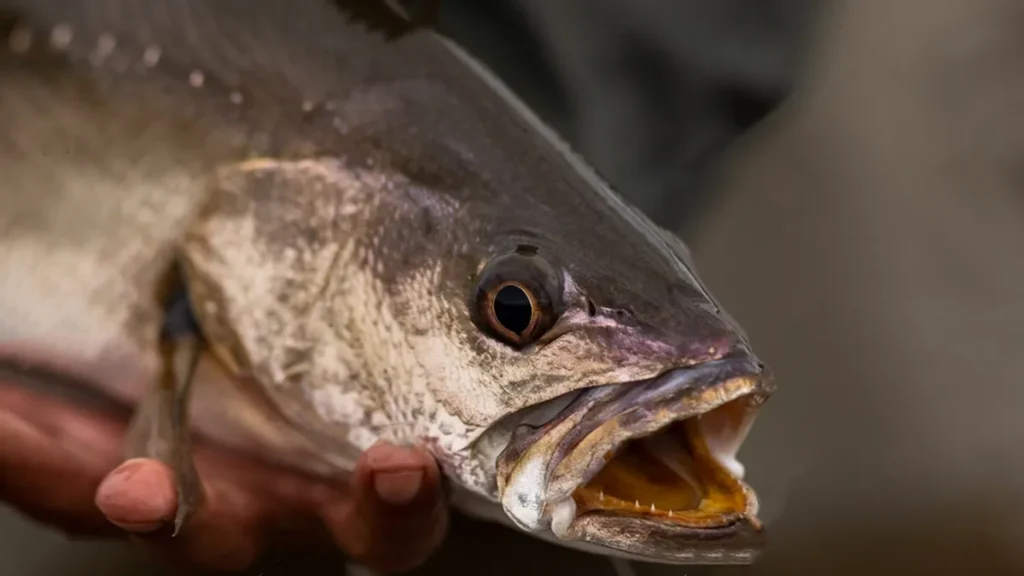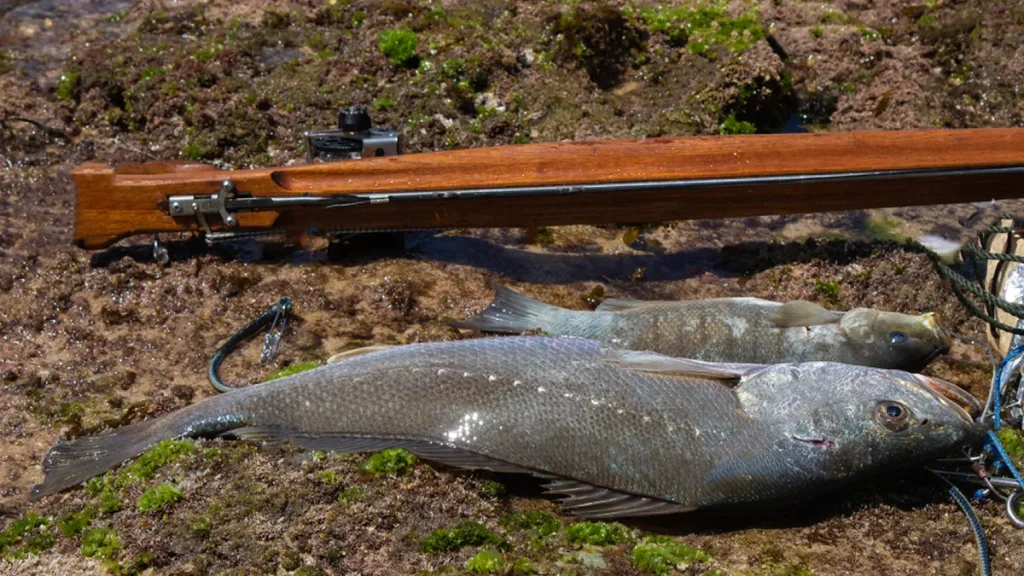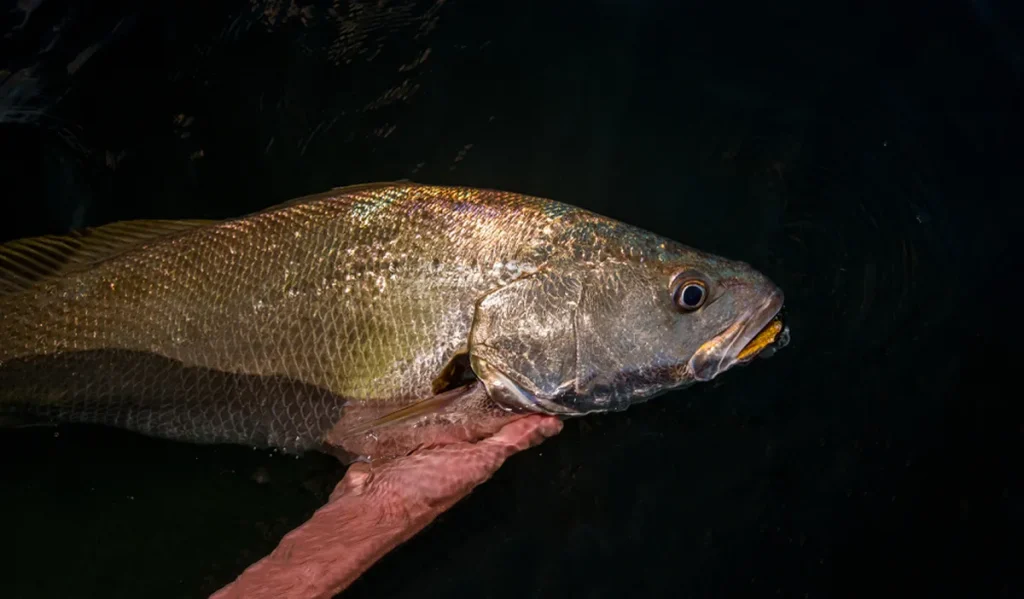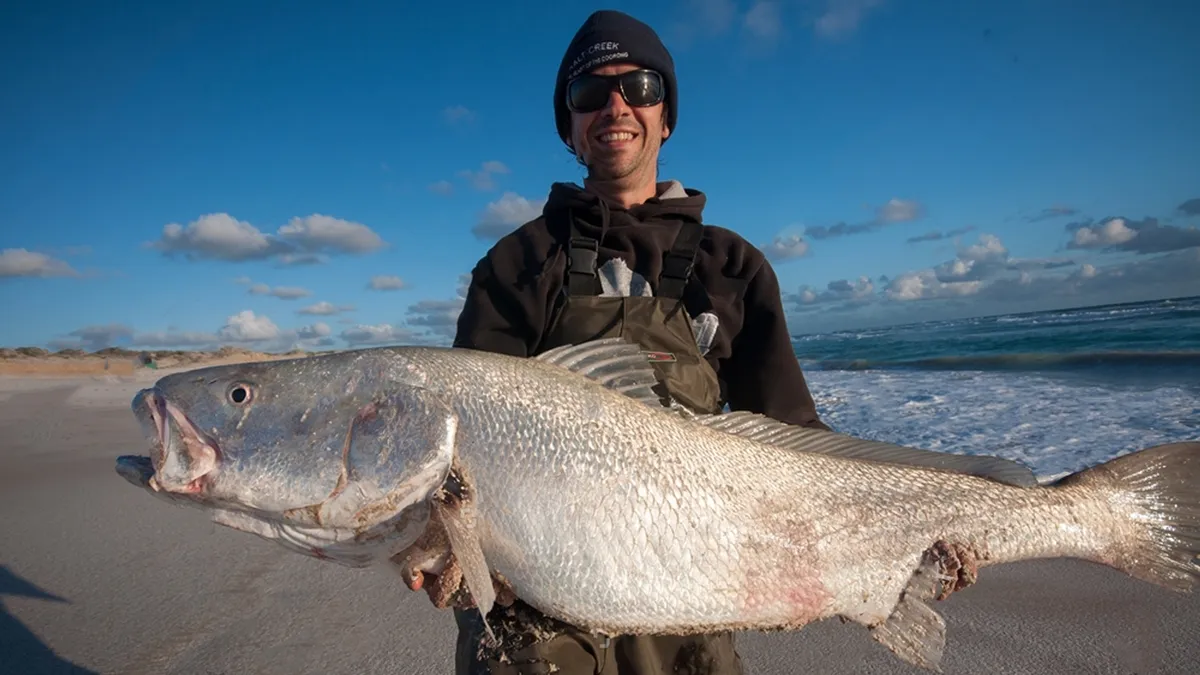G’day fellow anglers! If you’re as passionate about fishing as we are, then you know there’s nothing quite like the thrill of catching a mulloway. Known for their size and fight, these fish are a prized catch among us Aussie anglers. Mulloway fishing isn’t just a hobby; it’s a tradition that brings us closer to the water and the adventure we love.
Now, let’s talk about how to catch mulloway. Understanding their habits and habitats is key to a successful fishing experience. Whether you’re casting off at river mouths or venturing into deeper waters, knowing where to find these elusive beauties can make all the difference. And when it comes to gear, using the right fishing line is crucial. Our lines at ReelBoss are praised for their durability and strength, which are perfect for battling those big, powerful mulloway.
So, grab your gear, head to your favorite spot, and let’s make some memories!
Understanding Mulloway Fish

To successfully catch mulloway, it’s crucial to understand the characteristics and behavior of these remarkable fish. Mulloway fish are known for their impressive size, silvery scales, and distinctive croaking sound, which is why they’re sometimes called “jewfish.” These fish are not just strong fighters but also intelligent hunters, making them a challenging and rewarding catch for any angler.
When it comes to habitats, these fish are typically found in river mouths and deeper water areas. They prefer these locations because the currents and structure provide abundant food sources and protection. River mouths are particularly attractive to these fish due to the mix of fresh and saltwater, which attracts baitfish. In contrast, deeper water offers a cooler, more stable environment that mulloway favors, especially during warmer months.
Understanding the moon phase can also significantly improve your chances of a successful catch. These fish are known to be more active during new and full moons, as these phases affect the tides and subsequently the movement of baitfish. By aligning your fishing trips with the optimal moon phase, you can increase your chances of encountering these elusive fish.
Essential Gear for Mulloway Fishing

To maximize your success in catching these fish, having the right gear is essential. These fish are known for their strength and size, so your equipment needs to be up to the challenge. Let’s start with the basics: a robust fishing rod and reel combo. Look for a medium to heavy rod, around 7-9 feet long, paired with a high-quality reel that can handle the strain of a big mulloway.
A sturdy rod holder is another crucial piece of equipment. When you’re fishing for long periods or using multiple rods, a reliable rod holder ensures your gear stays secure, allowing you to focus on your fishing technique and spot more bites. This is especially important when you’re targeting these fish , as they often require patience and precision.
Choosing the right style of fishing is also vital. These fish can be caught using various methods, but some of the most effective include bait fishing and using soft plastics. Bait fishing with live or fresh bait such as mullet or squid can be particularly effective, as mulloway are opportunistic feeders. On the other hand, soft plastic lures can mimic the movement of prey, enticing these predatory fish to strike.
By investing in the right gear and adopting the best style of fishing, you’ll be well-prepared to target these fish and increase your chances of a successful and enjoyable fishing experience.
Best Locations to Catch Mulloway

Now that you have the right gear for mulloway fishing, it’s time to explore the best locations to catch these prized fish. The east coast of Australia is renowned for its excellent mulloway fishing spots, offering a variety of environments where these fish thrive.
River mouths are prime locations for targeting these fish. The mix of fresh and saltwater attracts baitfish, which in turn draw mulloway. Estuaries such as the Hawkesbury River in New South Wales and the Glenelg River in Victoria are well-known hotspots. These areas provide ample opportunities to catch mulloway, especially during the changing tides when baitfish are more active.
For those willing to venture further, deeper water locations along the east coast can be highly productive. Offshore reefs and deep channels are where larger mulloway tend to reside. Areas like the Gold Coast Seaway in Queensland and the deeper waters around Port Stephens in New South Wales are popular with seasoned anglers. These spots require a bit more effort to reach but can reward you with some of the biggest mulloway catches.
Whether you’re fishing in river mouths or deeper water, the east coast offers diverse and productive environments for mulloway fishing. By exploring these prime locations, you’ll increase your chances of landing that trophy mulloway and enjoying a successful fishing adventure.
Effective Baits and Lures for Mulloway
With the right location in mind, let’s delve into the best baits and lures for mulloway fishing. Choosing the appropriate bait or lure can significantly impact your success rate, as mulloway are known to be selective feeders.
Live baits are incredibly effective for targeting these fish. Some of the top choices include live mullet, squid, and prawns. These baits mimic the natural prey of mulloway, making them highly attractive. When using live baits, ensure they are fresh and lively to increase your chances of a bite. Rigging your live bait correctly is also crucial, as poorly presented bait can deter these cautious fish.
In addition to live bait, soft plastic lures are a popular choice among anglers. These lures are versatile and can mimic the movement of live prey, making them irresistible to mulloway. Soft plastics come in various shapes, sizes, and colors, allowing you to adapt to different fishing conditions. They are particularly effective in mulloway fishing because they can be used in various water depths and environments, from shallow river mouths to deeper water.
Using a combination of live bait and soft plastic lures can maximize your success when you target these fish. By understanding and utilizing these effective baits and lures, you’ll be well on your way to a fruitful fishing adventure.
Techniques for Successful Mulloway Fishing

With the right baits and lures in hand, let’s focus on the techniques that can make your fishing experience even more successful. Mastering these strategies is key to landing that coveted big mulloway.
Bait fishing is a traditional and highly effective method for catching these fish. When bait fishing, it’s essential to use a strong, sharp hook and sturdy tackle to handle these powerful fish. Present your bait naturally, whether it’s live mullet, squid, or prawns, and ensure it moves convincingly in the water. Patience is vital; let the mulloway take the bait before you set the hook.
Setting the hook properly is crucial. When you feel a nibble or a tug, resist the urge to yank immediately. Instead, allow the fish a moment to swallow the bait, then swiftly and firmly set the hook to secure your catch. This technique reduces the chances of the fish spitting out the bait and increases your hook-up rate.
Targeting big fish requires some additional strategies. Fishing during the optimal moon phase, usually around the new and full moons, can increase your chances of encountering larger mulloway. Also, consider fishing at night or during dawn and dusk when these fish are most active.
By refining your bait fishing techniques and knowing how to properly set the hook, you’ll enhance your ability to land those impressive big mulloway and enjoy a more rewarding fishing experience.
Legal Considerations

As you perfect your fishing techniques and gear, it’s crucial to be aware of the legal considerations that ensure sustainable fishing practices. One key aspect is ensuring your catch is legal-sized. Regulations vary by region, but typically, a legal-sized mulloway must meet a minimum length requirement. Always check the local rules before you head out, as keeping undersized fish can lead to fines and negatively impact these fish populations.
Following these regulations is not just about avoiding penalties; it’s about conserving the targeted species. These fish are a prized catch, and overfishing can threaten their numbers. By adhering to size limits and catch quotas, we help maintain healthy fish populations, ensuring that future generations can enjoy the thrill of catching these fish too.
Additionally, be mindful of seasonal restrictions and protected areas. Some regions have specific times of the year when fishing for mulloway is restricted to allow for breeding and population recovery. Respecting these laws helps preserve the ecosystem and the sport we love. By understanding and following these legal considerations, we can all contribute to the conservation of our targeted species and enjoy sustainable fishing adventures.
Conclusion
In summary, successful mulloway fishing requires a blend of the right gear, knowledge of fish behavior, and effective techniques. Understanding the habitats of these fish, such as river mouths and deeper water, and recognizing the impact of the moon phase can significantly enhance your fishing trips. Equipped with robust tackle, including a dependable rod holder, and using proven methods like bait fishing with live baits or soft plastic lures, you’ll be well-prepared to target these fish.
Setting the hook correctly and knowing the best times to fish, particularly for those big mulloway, are vital skills. Remember to respect local regulations by ensuring your catch is legally sized to help conserve these treasured fish for future generations.
Now that you have all these essential tips and techniques, it’s time to put them into practice. Head out to your favorite spots, apply what you’ve learned, and enjoy the excitement of fishing. And for the best fishing lines to help you catch mulloway, don’t forget to check out ReelBoss. We offer the durability and strength needed for your next big catch. Happy fishing, mates!
